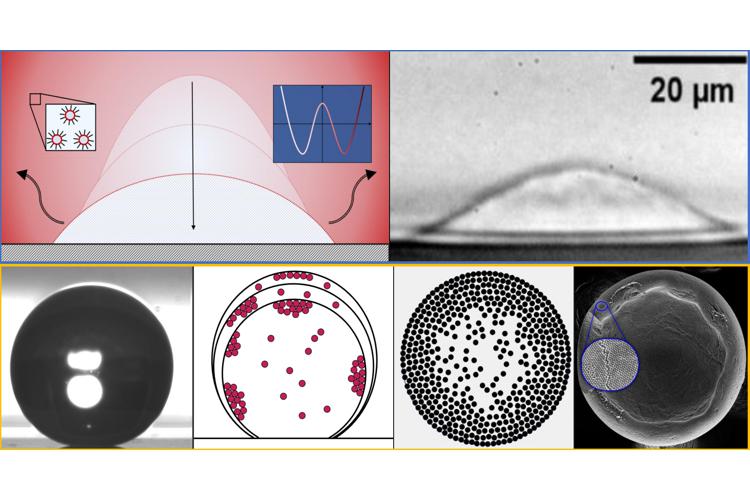- Share
- Share on Facebook
- Share on X
- Share on LinkedIn
Seminar
On May 6, 2024

Raphaël Saiseau (University of Twente)
The study of hydrodynamics at increasingly small scales raises fundamental questions about the validity of the classical hydrodynamics hypothesis as the system size approaches the interface thermal fluctuations length scale. More generally, for multi-scales systems, the interplay between macroscopic hydrodynamics and microscopic statistical physics is expected to play a role. For example, phase-field simulations have predicted that viscous dissipation singularities at moving contact lines can be regularised through evaporation-condensation mechanisms.
To explore this question, here we present an experimental and numerical investigation of the spreading of a sessile droplet for near-critical two-phases liquid mixture. The viscous spreading regime is robustly verified even for droplets close to the critical temperature. However the system also shows thermodynamic instability and the droplet simultaneously shrinks in size. This shrinking phenomenon analogous to evaporation is then explored for spherical aerosols droplets showing gravity and curvature induced diffusion mechanisms.
We will then discuss, despite more briefly, colloidal skin formation inside an evaporating droplet deposited on a superhydrophobic surface and containing a colloidal suspension. The particles' self-assembly dynamics is explored using molecular dynamics simulations and their distribution is modeled through a viscous-diffusion balance. Strikingly the modeled skin-bulk transition shows properties analogue to standard phases-separating interface.
Contact: Benjamin Dollet
Date
14:00
Localisation
LIPhy, salle de conférence
- Share
- Share on Facebook
- Share on X
- Share on LinkedIn